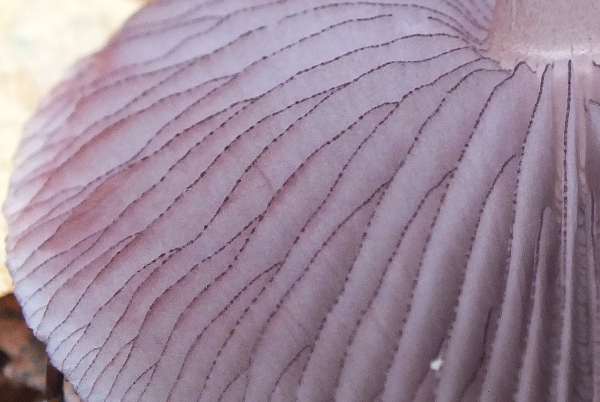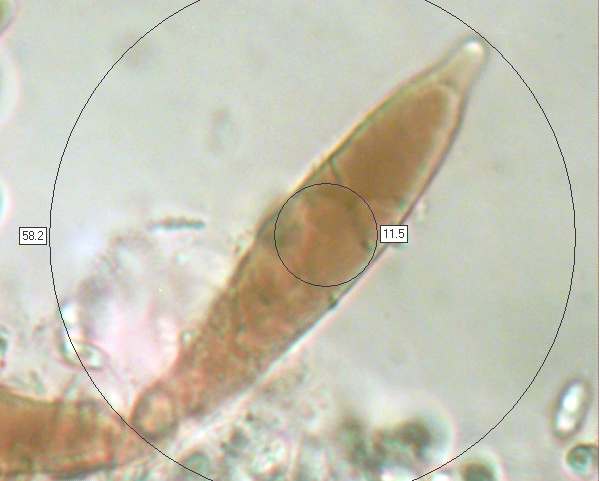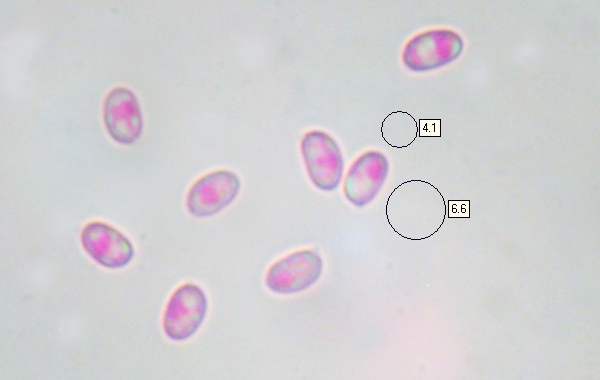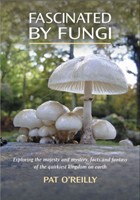Mycena pelianthina (Fr.) Quel. - Blackedge Bonnet
Phylum: Basidiomycota - Class: Agaricomycetes - Order: Agaricales - Family: Mycenaceae
Distribution - Taxonomic History - Etymology - Identification - Toxicity - Reference Sources
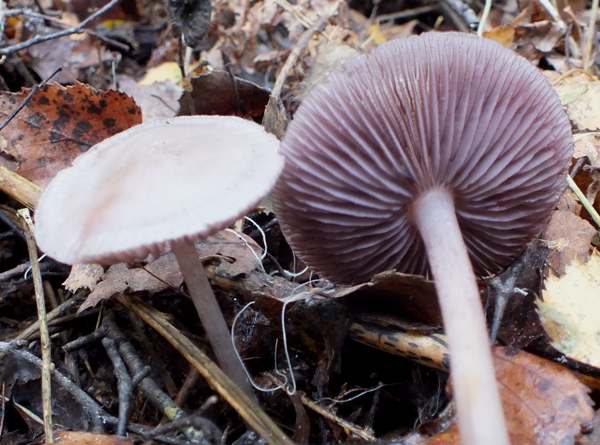
Mycena pelianthina, the Blackedge Bonnet, is a close relative of Mycena pura, with which it could easily be confused unless the gill edges are inspected closely..
Distribution
This fairly common bonnet mushroom is probably often overlooked because it is superficially similar to the very common and widespread Lilac Bonnet Mycena pura. The Blackedge Bonnet is found throughout Britain and Ireland and it is quite commonly recorded also across central and northern Europe, becoming more scarce in the Mediterranean region.
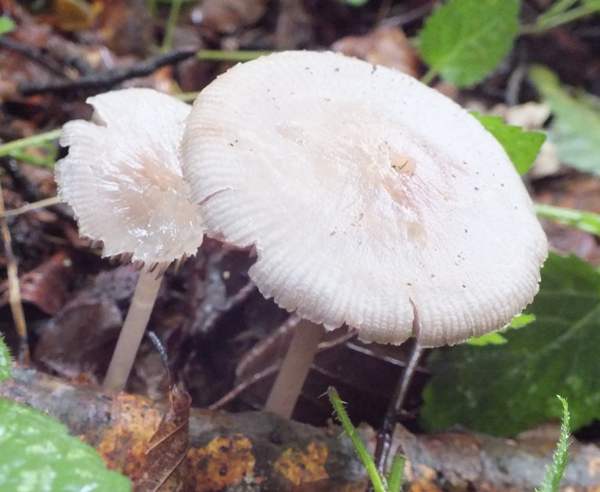
Taxonomic history
The basionym of this species was established when, in 1788 Elias Magnus Fries described this species scientifically, calling it Agaricus pelianthinus. (Earlier, in 1788, British mycologist James Bolton (1750 - 1799) had referred to this mushroom as Agaricus denticulatus.) The currently-accepted scientific name Mycena pelianthina dates from a 1872 publication by French mycologist Lucien Quelet.
Synonyms of Mycena pelianthina include Agaricus denticulatus Bolton, Agaricus pelianthinus Fr., Prunulus denticulatus (Bolton) Gray, Prunulus pelianthinus (Fr.) Jacq. Johnson, Vilgalys & Redhead.
Etymology
The specific epithet pelianthina comes from Latin and means 'of a livid blue colour'.
Identification guide
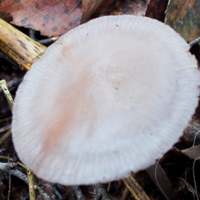 |
Cap1.5 to 5cm in diameter when fully mature, the caps are usually pinkish buff to pale lilac Initially bell-shaped, the caps flatten with a slight umbo and eventually the edge turns up to reveal the pale gills. When moist, the cap margins are distinctly lined. |
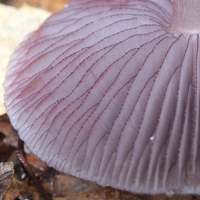 |
GillsEmarginate or slightly sinuate, the gills are violaceous grey to grey-brown with purple-to-black cystidia forming lines of dots on gill edges. |
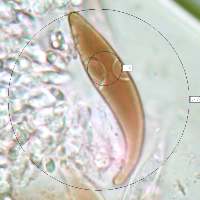 |
CheilocystidiaLageniform, up to 100um long and filled with purple-brown content. |
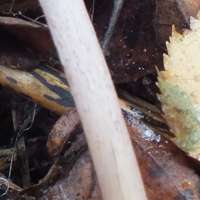 |
Stem2 to 8mm in diameter and 3 to 7cm long, tapering slightly towards the apex, the hollow stem is very pale fawn with slightly darker longitudinal fibres. |
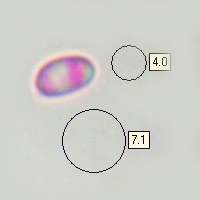 |
SporesEllipsoidal to subcylindrical, smooth, 6.5-8.5 x 3.5-4.5μm; amyloid. Spore printWhite.
|
Odour/taste |
Strong odour of radish when crushed; slight taste of radish. |
Habitat & Ecological role |
Saprobic in broadleaf woodland, especially under Beech, and less often recorded in coniferous woodland,. |
Season |
August to November in Britain and Ireland. |
Similar species |
Mycena pura is similar but does not have dark gill edges. |
Toxicity
The closely-related Mycena pura is known to contain the deadly toxin muscarine, albeit in low concentrations; it seems only sensible that Mycena pelianthina should also be considered inedible and potentially poisonous.
Reference Sources
Fascinated by Fungi, 2nd Edition, Pat O'Reilly 2016, reprinted by Coch-y-bonddu Books in 2022.
Penny Cullington, (Oct. 2013). British Mycenas - Brief Descriptions.
Giovanni Robich, (2003). Mycena d'Europa; Associazione Micologica Bresadola ; Vicenza : Fondazione Centro Studi Micologici.
British Mycological Society. English Names for Fungi
Dictionary of the Fungi; Paul M. Kirk, Paul F. Cannon, David W. Minter and J. A. Stalpers; CABI, 2008
Taxonomic history and synonym information on these pages is drawn from many sources but in particular from the British Mycological Society's GB Checklist of Fungi.
Fascinated by Fungi. Back by popular demand, Pat O'Reilly's best-selling 450-page hardback book is available now. The latest second edition was republished with a sparkling new cover design in September 2022 by Coch-y-Bonddu Books. Full details and copies are available from the publisher's online bookshop...
